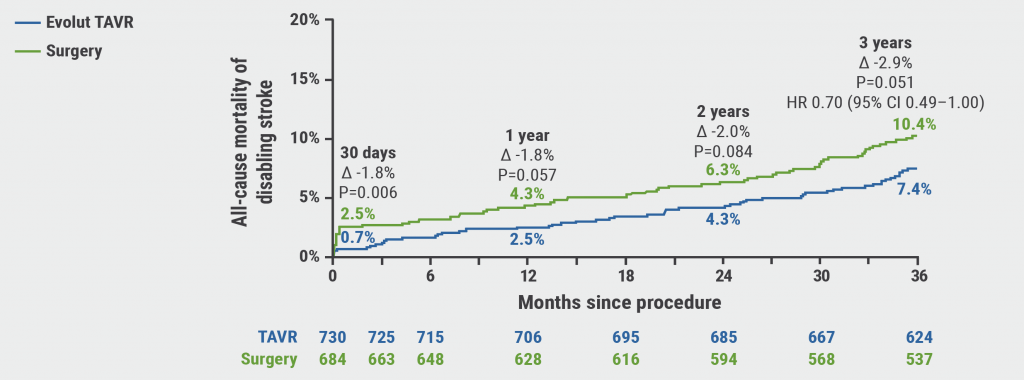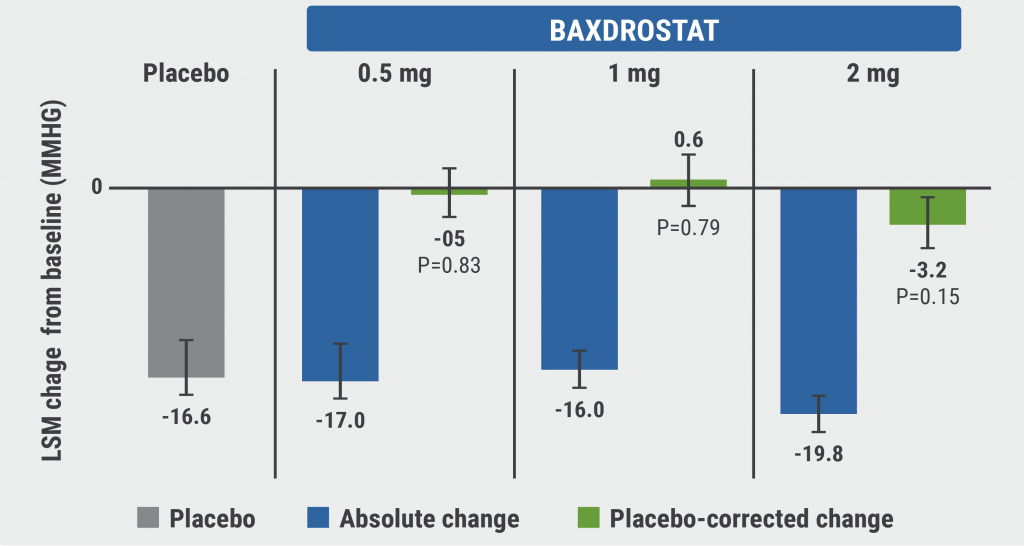https://doi.org/10.55788/edb21ce4
Despite high-intensity statin therapy, CAD patients still have a considerable residual risk of cardiovascular events. PCSK9 inhibitors have been shown to reduce this residual risk, said Prof. Annapoorna Kini (Icahn School of Medicine at Mount Sinai, NY, USA), who presented the phase 4 YELLOW III (NCT04710368) results [1]. Previous studies from her group have shown reduced maximum lipid core burden index in any 4-mm segment along the coronary artery (maxLCBI4mm; YELLOW I) and increased fibrous cap thickness (FCT) (YELLOW II) in obstructive lesions of CAD patients after rosuvastatin 40 mg therapy for 6–12 weeks [2,3].
The YELLOW III study aimed to assess the effect of 26 weeks of evolocumab (140 mg every 2 weeks) on coronary plaque morphology using optical coherence tomography (OCT) and near-infrared spectroscopy intravascular ultrasound (NIRS/IVUS), as well as peripheral blood mononuclear cell (PBMC) gene expression analysis [1]. The participants had stable CAD and were on maximally tolerated statin therapy. The 2 primary endpoints were the change in FCT assessed by OCT and change in maxLCBI4mm by NIRS.
Of 329 screened patients, 137 were enrolled and 110 completed the 26-week follow-up. The results showed a significant FCT increase measured by OCT from 70.9 to 97.7 (absolute change 26.8; P<0.001). Furthermore, NIRS showed a reduction in maxLCBI4mm from 306.8 to 213.1 (absolute change -93.7; P<0.001). A reduction was also seen in atheroma volume by IVUS in angiographically non-obstructive lesions. The prevalence of thin-cap fibroatheroma (TCFA) lesions was reduced from 48% to 13%. At 6 months follow-up, 20% of patients did not demonstrate FCT thickening, and 24% did not experience LCBI reduction.
“The first multimodality imaging report in stable patients with non-obstructive lesions and lower levels of LDL-C at baseline, compared to previous trials, further supports aggressive lipid lowering in the patient population,” concluded Prof. Kini. “PBMC transcriptomic data will allow predictive models for detecting subjects who demonstrate the greatest response regarding plaque morphology to PCSK9 inhibition therapy.”
- Kini AS, et al. Effect of evolocumab on coronary plaque characteristics in stable coronary artery disease: A multimodality imaging study (the YELLOW III study). Session 403-14, ACC Scientific Session 2023, 4–6 March, New Orleans, USA.
- Kini AS, et al. J Am Coll Cardiol. 2013;62(1):21–29.
- Kini AS, et al. J Am Coll Cardiol. 2017;69(6):628–640.
Copyright ©2023 Medicom Medical Publishers
Posted on
Previous Article
« Inflammation stronger predictor of MACE than cholesterol levels Next Article
Bempedoic acid benefits statin-intolerant patients at high cardiovascular risk »
« Inflammation stronger predictor of MACE than cholesterol levels Next Article
Bempedoic acid benefits statin-intolerant patients at high cardiovascular risk »
Table of Contents: ACC 2023
Featured articles
Pulmonary Arterial Hypertension
Sotatercept improves exercise capacity in patients with PAH
Fixed-dose macitentan plus tadalafil superior to either agent alone in PAH
Coronary Revascularisation
Immediate complete revascularisation non-inferior to staged complete revascularisation
RENOVATE-COMPLEX-PCI results support intravascular-guided PCI for complex lesions
Heart Failure and Cardiomyopathy
No need to restrict vigorous exercise in selected HCM patients?
No difference in CV outcomes between PET or CMR and SPECT
Interventional and Structural Cardiology
Benefits of MitraClip sustained to 5 years in COAPT trial
Transcatheter repair for patients with tricuspid regurgitation
Minimally invasive versus conventional sternotomy for mitral valve repair
Durable benefits of TAVR versus surgical aortic valve replacement in aortic stenosis patients
PCI not better than GDMT in severe ischaemic cardiomyopathy
Prevention
Anticoagulation in non-critically ill hospitalised COVID patients
Statins associated with reduced heart dysfunction from anthracyclines
Multifaceted strategy improves prescription of therapies for diabetes and ASCVD
Dyslipidaemia
Bempedoic acid benefits statin-intolerant patients at high cardiovascular risk
Evolocumab improves coronary plaque morphology in stable CAD
Inflammation stronger predictor of MACE than cholesterol levels
Oral PCSK9 inhibitor significantly lowers LDL-C
Miscellaneous
Baxdrostat in patients with uncontrolled hypertension
Hormone therapy for gender dysphoria associated with increased CV risk
Pulsed-field ablation appears safe and effective for atrial fibrillation
Key correlates of incident dementia identified in the MESA study
Related Articles


March 22, 2023
ACC 2023 Highlights Podcast

© 2024 Medicom Medical Publishers. All rights reserved. Terms and Conditions | Privacy Policy
HEAD OFFICE
Laarderhoogtweg 25
1101 EB Amsterdam
The Netherlands
T: +31 85 4012 560
E: publishers@medicom-publishers.com

